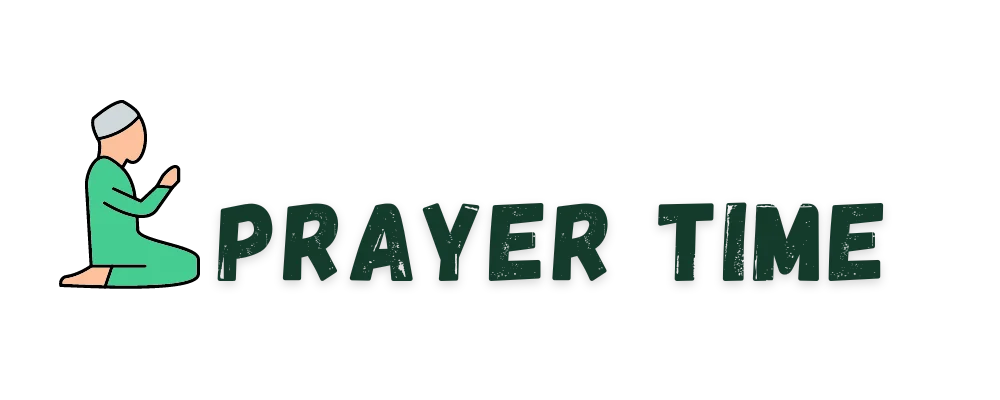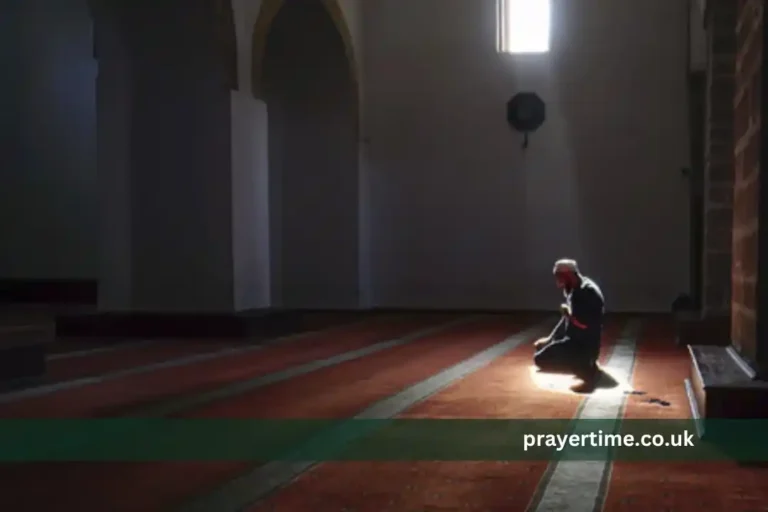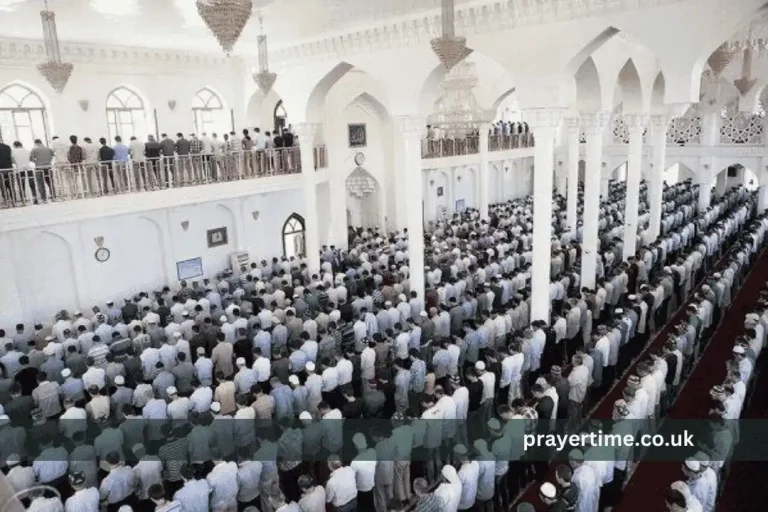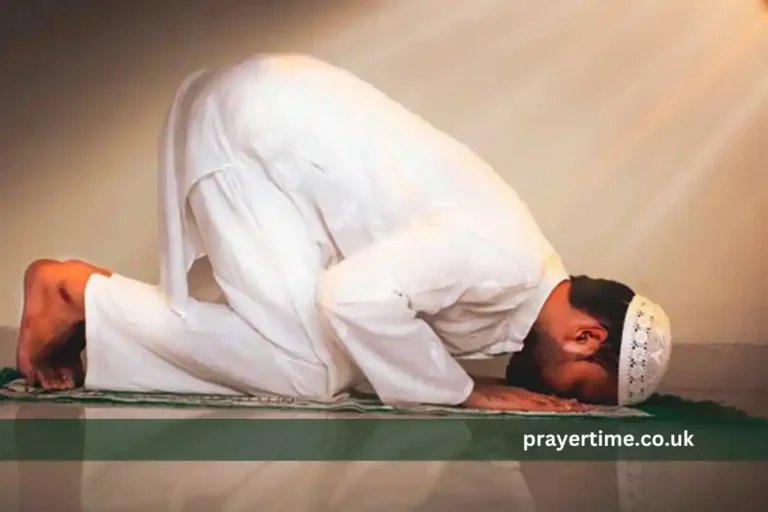How to Pray Salah: A Comprehensive Guide for Muslims

Salah, the Muslim prayer, stands as one of the fundamental pillars of Islam, serving as a direct connection between the faithful and Allah. This essential act of worship is not merely a ritual but a spiritual journey that every Muslim undertakes five times daily. For those seeking to deepen their faith and strengthen their relationship with Allah, learning how to pray salah correctly is crucial.
In Islam, salah holds a position of utmost importance. Prophet Muhammad (peace be upon him) emphasized its significance, stating,
“The first matter that the slave will be brought to account for on the Day of Judgment is the prayer. If it is sound, then the rest of his deeds will be sound. And if it is bad, then the rest of his deeds will be bad” (Narrated by al-Tabarani).
This hadith underscores the central role of prayer in a Muslim’s life, highlighting its impact on one’s spiritual well-being and ultimate judgment.
Salah, also known as namaz in some cultures, is more than just a series of physical movements. It’s a holistic act of submission that engages the body, mind, and soul. The Islamic prayer combines recitation of Quranic verses, physical postures, and heartfelt supplications, creating a unique form of worship that nurtures both spiritual and physical well-being.
Understanding how to pray in Islam can seem daunting for newcomers to Islam or those seeking to refine their practice. However, with proper guidance and consistent practice, mastering the steps of salah becomes an enriching journey. This comprehensive guide will walk you through how to perform salah, from the initial preparations to the final supplications.
Whether you’re learning how to pray namaz for the first time or looking to enhance your existing practice, this article will provide you with the knowledge and insights needed to perfect your salah. We’ll explore each step in detail, discuss common challenges, and offer tips to make your prayer more meaningful and impactful.
As we explore how to pray salah, remember that the ultimate goal is not just perfecting the physical motions but achieving a state of khushu. This deep, reverent concentration allows you to truly connect with Allah during your prayers. Let’s begin this spiritual journey together, step by step, to unlock the profound beauty and transformative power of salah in your daily life.
Preparation for Salah
It’s crucial to understand the importance of proper preparation before diving into how to pray Salah. This groundwork sets the stage for a focused and meaningful prayer experience.
Ensuring cleanliness (Wudu)
The first step in preparing for salah is achieving a state of ritual purity through wudu, or ablution. The cleansing process is not just about physical cleanliness, but also about spiritual cleansing.
To perform wudu:
- Begin with the intention (niyyah) to purify yourself for prayer.
- Wash your hands up to the wrists three times.
- Rinse your mouth three times.
- Clean your nostrils by sniffing water and blowing it out three times.
- Wash your face from forehead to chin and ear to ear three times.
- Wash your arms up to the elbows three times, starting with the right arm.
- Wipe your head with wet hands, from front to back.
- Clean your ears with wet fingers.
- Wash your feet up to the ankles three times, starting with the right foot.

Remember, learning how to do wudu correctly is as important as learning how to pray namaz itself. The Prophet Muhammad (peace be upon him) said,
“The key to Paradise is prayer, and the key to prayer is purification” (Narrated by Ahmad).
Choosing the right time and place
Salah is prescribed at specific times throughout the day. Understanding islamic prayer times is essential for maintaining consistency in your worship. The five daily prayers are:
- Fajr (dawn prayer)
- Dhuhr (noon prayer)
- Asr (afternoon prayer)
- Maghrib (sunset prayer)
- Isha (night prayer)
To find the exact prayer times for your location, you can use reliable Islamic prayer time apps or websites. You can learn how to pray Islam according to the correct timing by using these tools.
Islam offers flexibility when it comes to praying. While praying in a mosque (masjid) is highly rewarded, you can pray anywhere that is clean and free from impurities. Whether you’re at home, work, or traveling, you can perform your salah as long as you have a clean space.
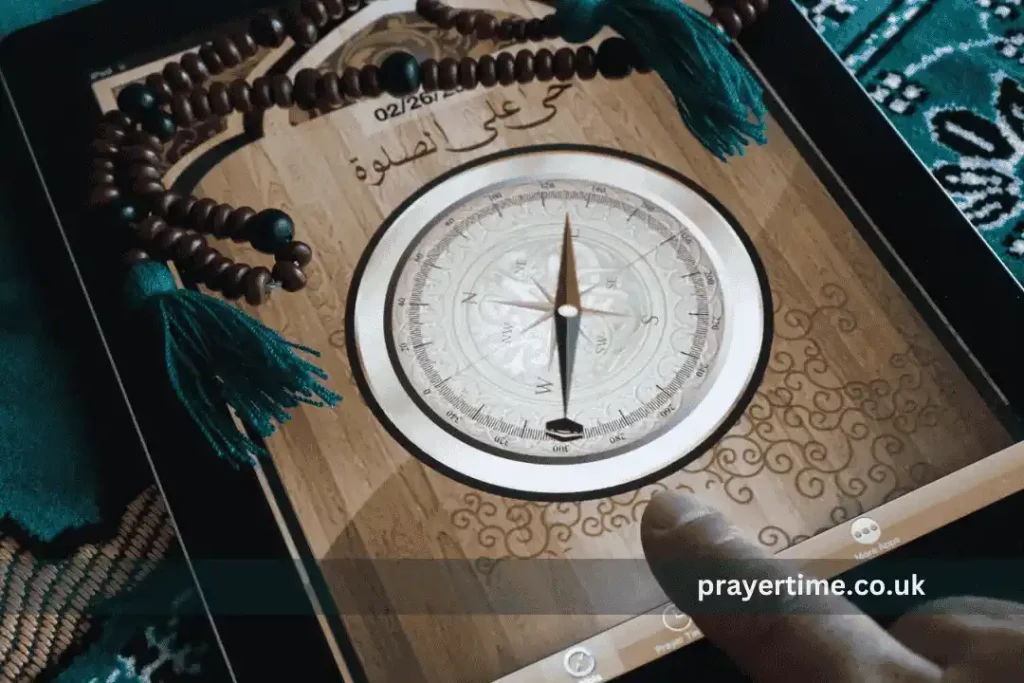
Facing the Qibla
An essential aspect of how to pray salah is facing the correct direction – the Qibla. In prayer, all Muslims worldwide face the Qibla, which is the direction of the Kaaba in Mecca.
To find the Qibla:
- Use a compass or Qibla-finding app on your smartphone.
- In mosques, look for the mihrab, a niche in the wall indicating the Qibla direction.
- When traveling, do your best to estimate the direction. Allah says in the Quran,
“And to Allah belongs the east and the west. So wherever you [might] turn, there is the Face of Allah” (Quran 2:115).
Fun Fact
Did you know that Muslims in space also pray facing the Qibla? In 2007, Malaysia’s National Fatwa Council created guidelines for Muslim astronauts, advising them to face Earth, then Mecca, then just Earth if Mecca is not visible.
Ensuring cleanliness through wudu, choosing the right time and place, and facing the Qibla sets a strong foundation for your salah. These preparations fulfill the physical requirements and help mentally prepare you for the spiritual connection you’re about to make with Allah.
Remember, perfecting these preparatory steps is integral to learning how to pray Muslim prayers correctly. These steps will become second nature with practice, allowing you to focus more deeply on the prayer itself.
Step-by-Step Guide to Praying Salah
Now that we’ve covered the essential preparations, let’s dive into the heart of how to pray salah. This step-by-step guide will walk you through each component of the Islamic prayer, helping you understand how to perform salah correctly.
A. Making the intention (Niyyah)
The first step in how to pray Islam is making the intention or niyyah. This is a mental act where you specify which prayer you’re about to perform. For example, “I intend to pray the Fajr prayer for Allah.”
Remember, the Prophet Muhammad (peace be upon him) said,
“Actions are but by intentions, and every person will get the reward according to what he has intended” (Bukhari and Muslim).
B. Takbir al-Ihram (Saying “Allahu Akbar”)
To begin the salah, raise your hands to your ears and say “Allahu Akbar” (Allah is the Greatest). This action, known as Takbir al-Ihram, marks the official start of your prayer.
Fun Fact
The phrase “Allahu Akbar” is often translated as “Allah is the Greatest,” but its deeper meaning is “Allah is Greater” – signifying that Allah is greater than anything in existence.
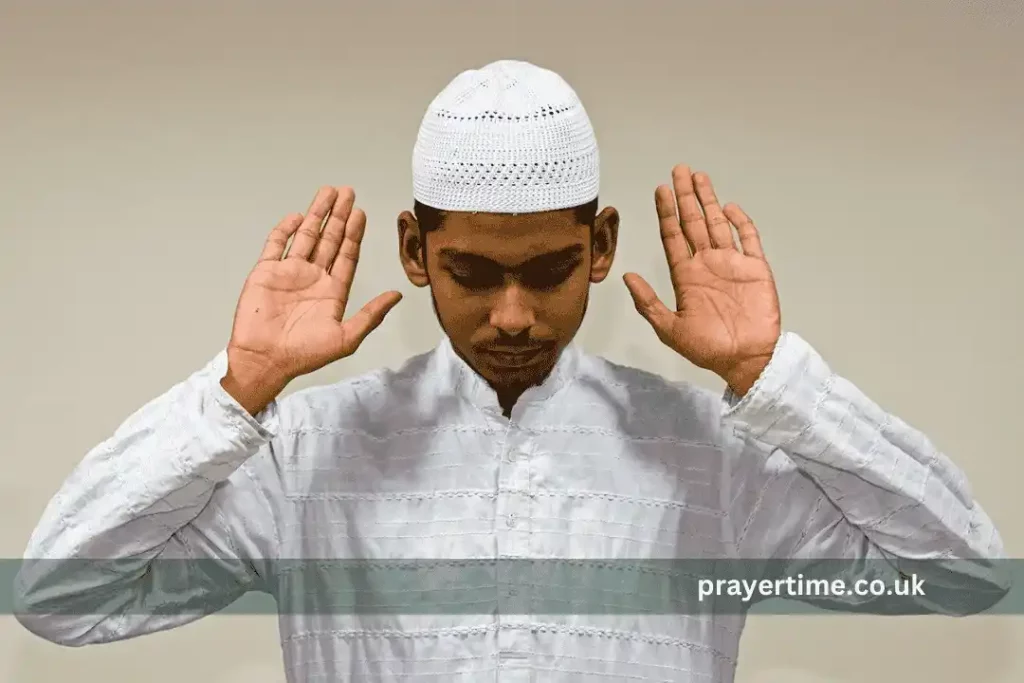
C. Standing position (Qiyam)
After the Takbir, lower your hands and place them over your chest, with your right hand over your left. This is the qiyam or standing position. In this posture, recite:
- The opening chapter of the Quran, Surah Al-Fatihah
- Any other short surah or verses from the Quran
For those learning how to pray namaz, memorizing short surahs like Al-Ikhlas or Al-Kawthar can be helpful for this step.
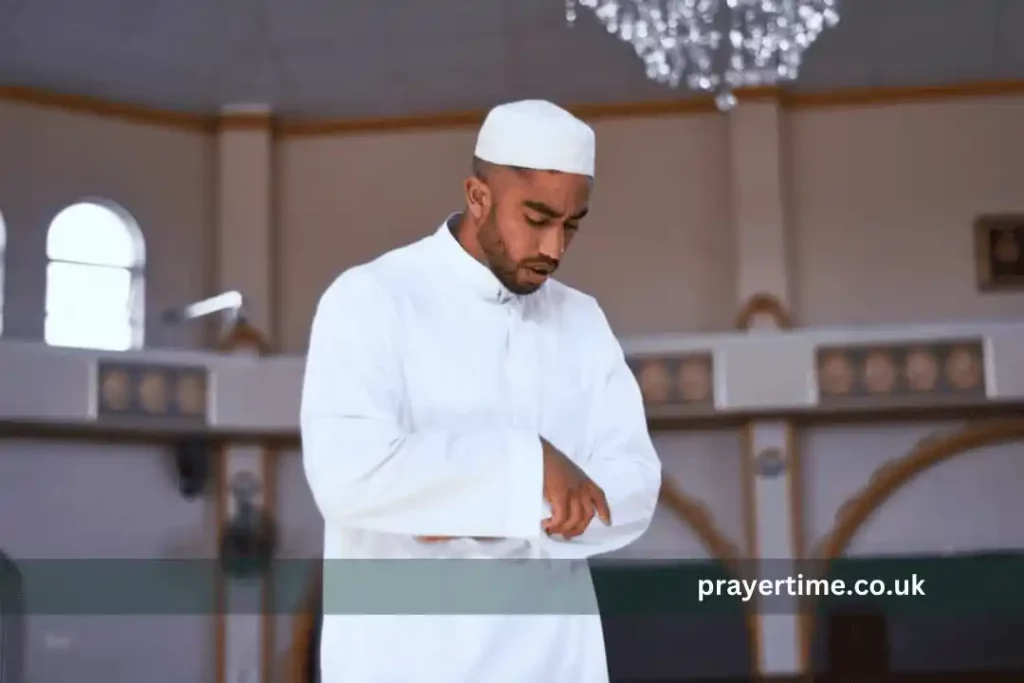
D. Bowing (Ruku)
Next, bow from the waist, keeping your back straight and hands on your knees. This position is called ruku. While bowing, say “Subhana Rabbiy al-Azeem” (Glory be to my Lord, the Magnificent) three times.
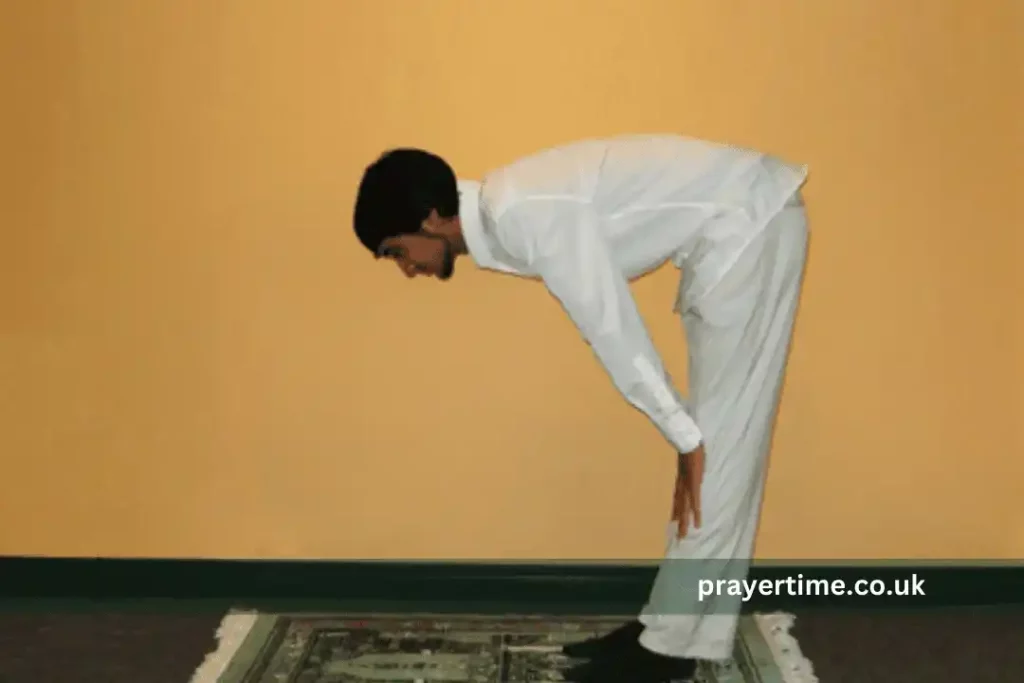
E. Prostration (Sujood)
After rising from ruku and briefly standing straight, proceed to prostration or sujood. In this position:
- Place your forehead, nose, palms, knees, and toes on the ground
- Say “Subhana Rabbiy al-A’la” (Glory be to my Lord, the Most High) three times
Sujood is a crucial part of how to pray salah, symbolizing complete submission to Allah.
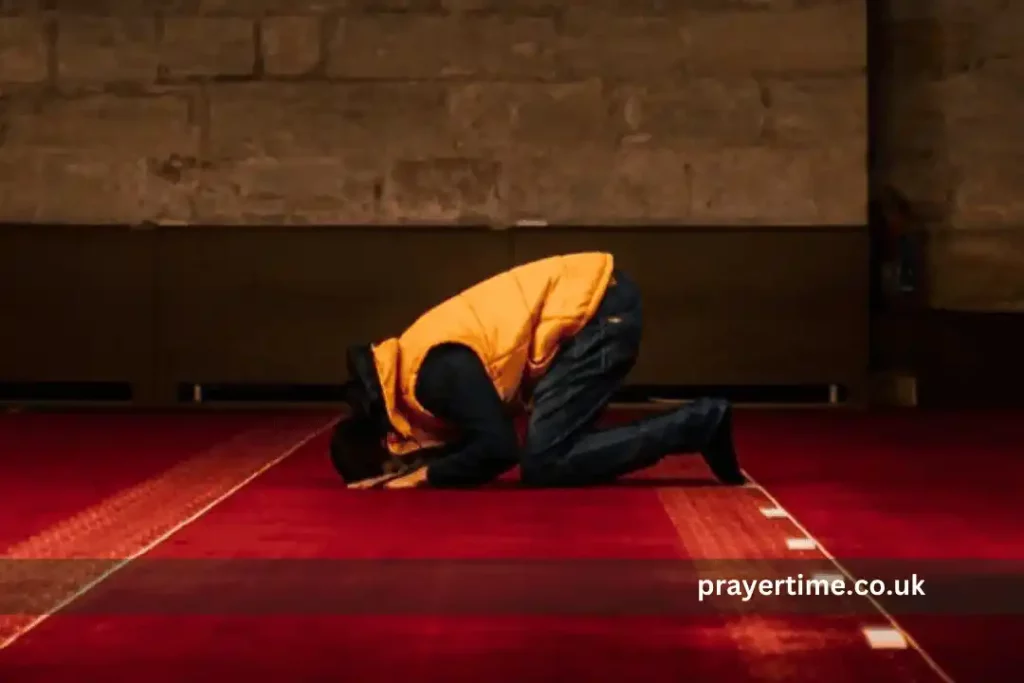
F. Sitting between prostrations (Jalsah)
Rise from the first prostration to a sitting position (jalsah). Sit briefly, saying “Rabbi ighfir li” (My Lord, forgive me). Then perform a second prostration.
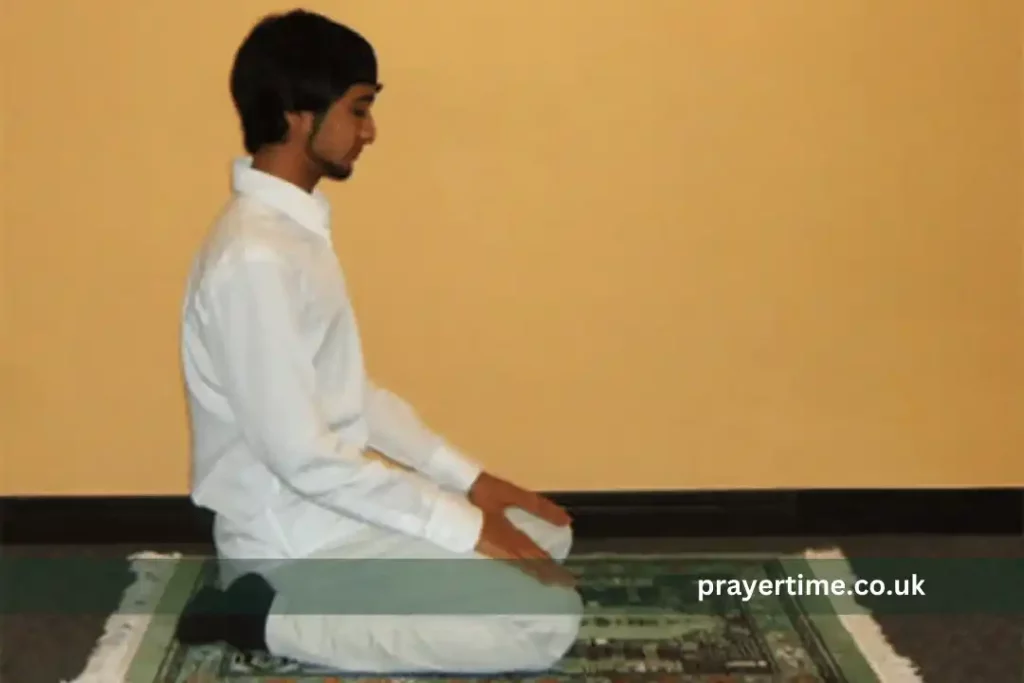
G. Final sitting (Tashahhud)
In the last rak’ah (unit) of prayer, after the prostrations, sit for the final tashahhud. Recite the tahiyyat, salawat on the Prophet, and any personal supplications.
H. Concluding the prayer (Tasleem)
To end the prayer, turn your face to the right saying “As-salamu alaykum wa rahmatullah” (Peace and Allah’s mercy be upon you), then to the left repeating the same.
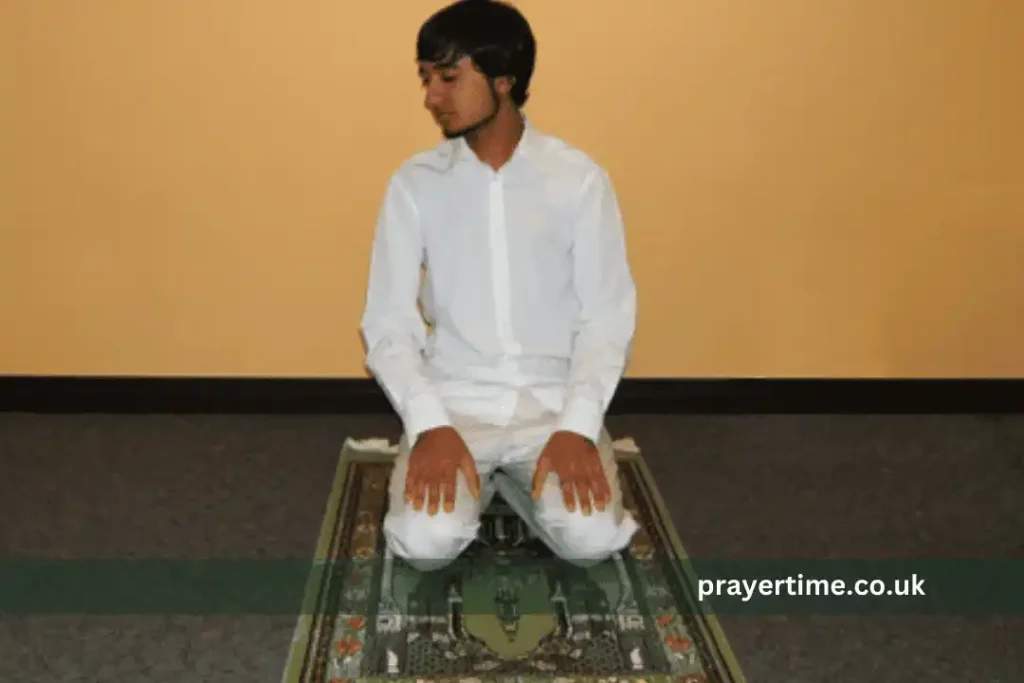
This completes one full cycle of salah. The number of rak’ahs varies depending on which of the five daily prayers you’re performing:
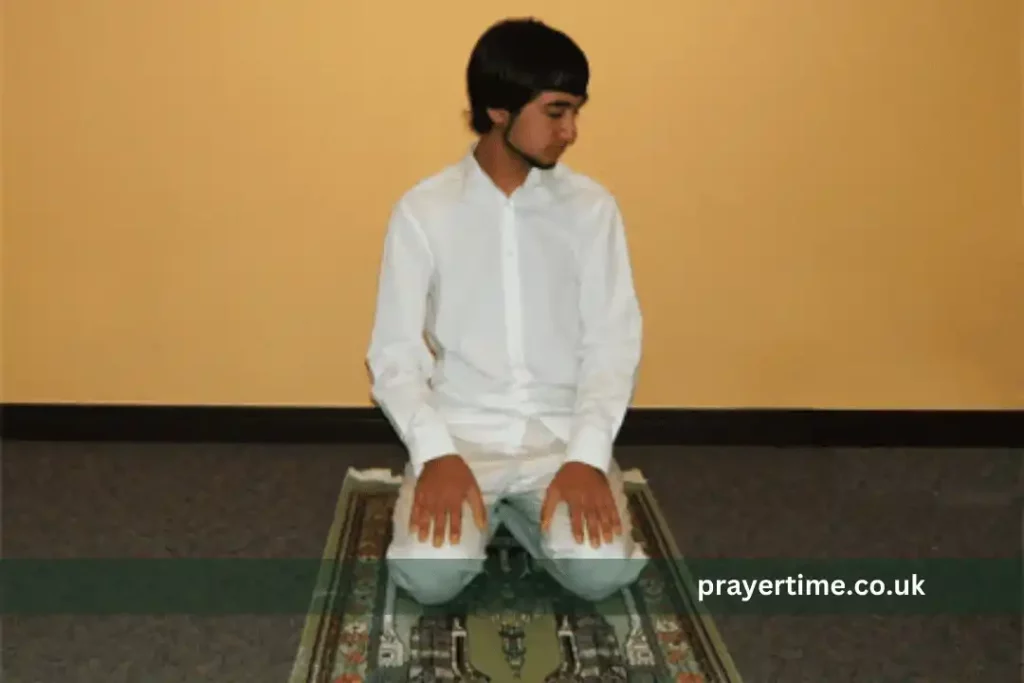
- Fajr: 2 rak’ahs
- Dhuhr: 4 rak’ahs
- Asr: 4 rak’ahs
- Maghrib: 3 rak’ahs
- Isha: 4 rak’ahs
Learning how to pray muslim prayer correctly takes practice. Don’t be discouraged if you make mistakes initially. The Prophet Muhammad (peace be upon him) said, “Pray as you have seen me praying” (Bukhari), emphasizing the importance of learning and perfecting the prayer over time.
Remember, while it’s crucial to learn the physical aspects of how to offer salah, the essence of prayer lies in the connection you establish with Allah. Strive to understand the meanings of what you recite and maintain focus throughout your salah.
By following these steps and practicing regularly, you’ll soon master how to pray salah, enhancing your spiritual connection and fulfilling this vital pillar of Islam.
Differences in Prayer Based on Prayer Times
Understanding how to pray salah at different times of the day is crucial for every Muslim. Each of the five daily prayers has its unique characteristics and requirements. Let’s explore how to perform salah for each prayer time.
Fajr prayer
Fajr, the dawn prayer, is the first prayer of the day. Here’s how to pray fajr:
- Time: From dawn until sunrise
- Number of rak’ahs: 2 obligatory (fard)
- Recitation: Audible

Fun Fact
Did you know that praying Fajr is equivalent to staying up all night in worship? The Prophet Muhammad (peace be upon him) said, “Whoever prays the Fajr prayer in congregation, it is as if he had prayed the whole night” (Muslim).
Dhuhr prayer
Dhuhr is the noon prayer. Here’s how to pray namaz for Dhuhr:
- Time: After the sun has passed its zenith until mid-afternoon
- Number of rak’ahs: 4 obligatory
- Recitation: Silent
Note: On Fridays, the Dhuhr prayer is replaced by the Jumu’ah (Friday) prayer, which consists of 2 rak’ahs preceded by a sermon.
Asr prayer
Asr is the afternoon prayer. Learning how to pray asr correctly is important:
- Time: Mid-afternoon until just before sunset
- Number of rak’ahs: 4 obligatory
- Recitation: Silent
The Prophet Muhammad (peace be upon him) emphasized the importance of Asr prayer, saying,
“Whoever misses the Asr prayer, it is as if he lost his family and property” (Bukhari).
Maghrib prayer
Maghrib is the sunset prayer. Here’s how to pray maghrib:
- Time: Just after sunset until dusk
- Number of rak’ahs: 3 obligatory
- Recitation: Audible for the first two rak’ahs, silent for the third

Isha prayer
Isha is the night prayer. Understanding how to pray isha is essential:
- Time: After dusk until dawn
- Number of rak’ahs: 4 obligatory
- Recitation: Audible for the first two rak’ahs, silent for the last two
Additional prayers associated with Isha:
- Taraweeh: Extra prayers performed during Ramadan after Isha
- Tahajjud: Voluntary night prayer performed after waking from sleep
When learning how to pray Islam, it’s important to note that while the basic structure of salah remains the same, there are slight variations in the number of rak’ahs and the audibility of recitation for each prayer time.
Remember, consistency is key in maintaining your daily prayers. The Quran states,
“Indeed, prayer has been decreed upon the believers a decree of specified times” (4:103)
This emphasizes the importance of praying at the correct times.
To help you stay on track, consider using an Islamic prayer times app or website. These tools can provide accurate prayer times based on your location, making it easier to plan your day around your salah.
For those new to Islam or still learning how to pray muslim prayer, don’t be discouraged if you find it challenging to pray all five prayers immediately. Initially, pray one or two times a day and gradually increase as you become more comfortable.
By understanding the unique aspects of each prayer time, you’ll be better equipped to fulfill this fundamental obligation of Islam. Every prayer is an opportunity to reconnect with Allah and seek His guidance and blessings.
Common Mistakes and How to Avoid Them
As you learn how to pray salah, it’s natural to encounter some challenges. The awareness of common mistakes will help you improve your prayer and deepen your relationship with Allah. Here are some frequent blunders and how to avoid them.
Physical errors
- Rushing through movements:
One of the most common mistakes when learning how to pray namaz is rushing through the physical actions. Remember, each position has a purpose and should be performed with mindfulness.
Solution: Take your time with each movement. The Prophet Muhammad (peace be upon him) said, “The worst type of thief is the one who steals from his prayer.” (Ahmad) This refers to rushing and not completing the movements properly.

- Incorrect foot placement:
During standing and sitting positions, ensure your feet are positioned correctly.
Solution: In qiyam (standing), keep your feet shoulder-width apart. In jalsah (sitting between prostrations), sit on your left foot with the right foot upright.
- Not maintaining a straight back in ruku:
Bowing with a curved back is a common error when learning how to pray in Islam.
Solution: In ruku, your back should be straight and parallel to the ground, forming a 90-degree angle with your legs.
Mental distractions
- Losing focus:
It’s easy for the mind to wander during prayer, especially for beginners.
Solution: Practice khushu (concentration) by understanding the meanings of what you’re reciting. The Quran advises, “…and do not approach prayer while you are intoxicated until you know what you are saying…” (4:43), emphasizing the importance of mental presence.
- Counting rak’ahs incorrectly:
Losing track of rak’ahs is a common issue when learning how to pray salah.
Solution: Stay mindful throughout your prayer. If unsure, always assume the lesser number and complete your prayer accordingly.

Fun Fact
Did you know that if you have doubts about the number of rak’ahs, Islamic scholars recommend performing an additional two prostrations (sujud as-sahw) at the end of the prayer as a precautionary measure?
- Worrying about worldly matters:
Thoughts about work, family, or other concerns can intrude during prayer.
Solution: Before starting your salah, take a moment to clear your mind. Remember that prayer time is your personal audience with Allah.
Pronunciation issues
- Mispronouncing Arabic words:
For non-Arabic speakers, correct pronunciation can be challenging when learning to pray muslim prayer.
Solution: Take time to learn the correct pronunciation of essential phrases and surahs. Many online resources and apps offer audio guides for proper recitation.
- Reciting too quickly:
In an effort to remember everything, some may recite the verses too fast, compromising pronunciation and meaning.
Solution: Recite at a measured pace. The Prophet Muhammad (peace be upon him) used to recite the Quran clearly, letter by letter (Abu Dawud).
- Forgetting parts of the recitation:
It’s common for beginners to forget portions of the required recitations.
Solution: Start by memorizing short surahs and gradually progress to longer ones. Consistent practice is key to memorization.

Remember, perfecting your salah is a journey. The Prophet Muhammad (peace be upon him) said, “Pray as you have seen me praying” (Bukhari), indicating that learning and improvement are ongoing processes.
If you make a mistake during prayer, don’t panic. Minor errors don’t invalidate your salah. The most important aspect is your sincerity and effort in connecting with Allah.
For those still learning to pray in Islam, consider praying with a more experienced Muslim who can guide you. Many mosques offer classes on how to perform salah correctly.
Lastly, be patient with yourself. Every Muslim, from beginners to those who have been praying for years, can always enhance their salah. The key is to approach each prayer with sincerity, focus, and a desire for continuous improvement in your worship of Allah.
Tips for Enhancing Your Salah Experience
Once you’ve learned the basics of how to pray salah, it’s time to focus on deepening your prayer experience. These tips will help you transform your salah from a routine act into a profound spiritual journey.
Understanding the meanings of recitations
- Learn translations:
Familiarize yourself with the English translations of the Arabic recitations. This understanding will significantly enhance your connection to the words you’re saying. - Reflect on the verses:
Take time to ponder over the meanings of the Quranic verses you recite. The Quran states, “Then do they not reflect upon the Quran, or are there locks upon their hearts?” (47:24) - Vary your recitations:
While memorizing the essential surahs is important, try to learn new ones to keep your prayers fresh and engaging.
Fun Fact
Did you know that the shortest surah in the Quran, Al-Kawthar, is only three verses long? It’s a great starting point for those learning how to pray namaz and looking to expand their Quranic recitations.
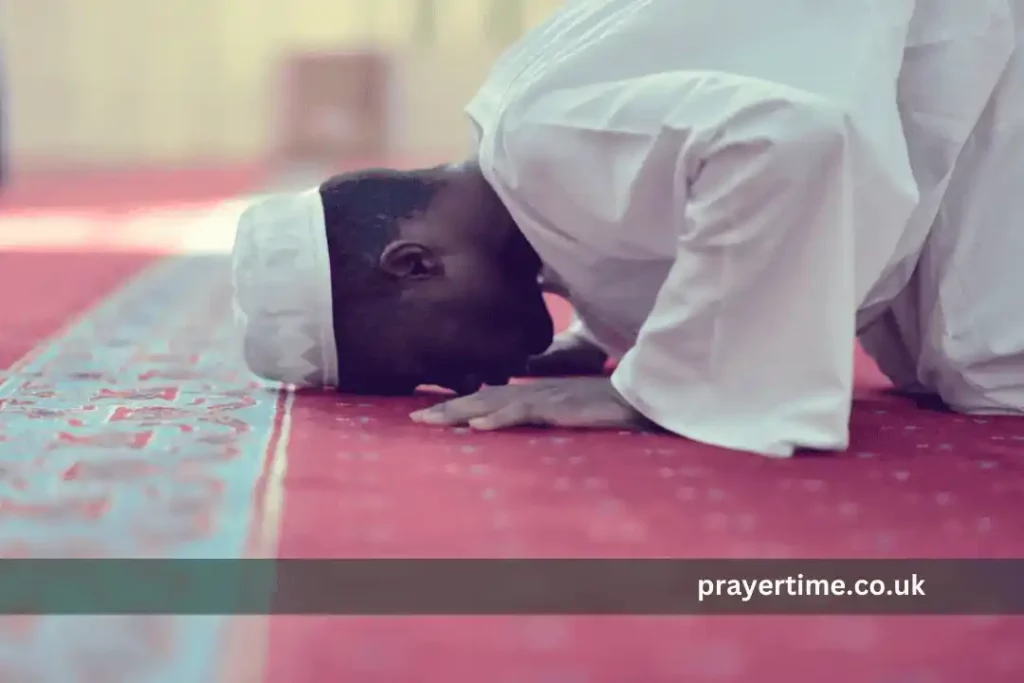
Developing concentration (Khushu)
Khushu, or deep concentration in prayer, is crucial for a meaningful salah experience. Here are some tips to develop khushu:
- Prepare your mind:
Before starting your prayer, take a moment to clear your thoughts and focus on Allah. - Understand what you’re saying:
Knowing the meanings of your recitations can significantly improve your concentration. - Visualize your position:
Imagine yourself standing before Allah. This mental image can help maintain focus throughout your prayer. - Pray as if it’s your last:
The Prophet Muhammad (peace be upon him) advised, “Pray as if it were your farewell prayer” (Ibn Majah). This mindset can dramatically increase your concentration.
Consistency in prayer times
Maintaining regularity in your prayers is essential for spiritual growth. Here are some tips to help you stay consistent:
- Use prayer time apps:
Utilize Islamic prayer time apps to receive reminders for each salah. This can be particularly helpful when learning how to pray Islam in a new environment or while traveling. - Plan your day around prayer times:
Rather than fitting prayers into your schedule, organize your day around the five daily prayers. - Pray in congregation when possible:
Praying in a mosque or with family can help you maintain consistency and increase the reward of your prayers. - Make up missed prayers:
If you miss a prayer, make it up as soon as you remember. The Prophet Muhammad (peace be upon him) said, “Whoever forgets a prayer should pray it when he remembers it” (Bukhari and Muslim).

Remember, enhancing your salah is a continuous process. Even those who have been praying for years constantly strive to improve their connection with Allah through prayer.
For those still learning how to pray muslim prayer, don’t be discouraged if you find it challenging to implement all these tips at once. Start with small steps and gradually incorporate more as you become comfortable.
Developing a deep and meaningful prayer experience takes time and effort, but the spiritual rewards are immense. The Quran reminds us,
“Successful indeed are the believers, those who humble themselves in their prayers” (23:1-2).
By focusing on understanding your recitations, developing khushu, and maintaining consistency, you’ll find that your salah becomes a religious obligation and a source of peace, guidance, and spiritual fulfillment in your daily life.
Remember, the goal of salah is not perfection but a sincere connection with Allah. As you continue to learn how to pray salah and improve your practice, keep this ultimate purpose in mind, and your prayers will become a cherished part of your day.
Salah for Special Circumstances
Islam is a religion of ease, and Allah has provided flexibility in how to pray salah under various circumstances. Understanding these allowances is crucial for maintaining your prayer routine in different situations.
Traveling prayer (Qasr)
When traveling, Muslims are allowed to shorten certain prayers, a practice known as Qasr. Here’s how to pray namaz while traveling:
- Eligibility: The journey should be at least 48 miles (77 km) from your home.
- Which prayers: Only the four-rak’ah prayers (Dhuhr, Asr, and Isha) are shortened to two rak’ahs.
- Duration: You can pray Qasr for up to 15 days at your destination.

Remember, Fajr and Maghrib prayers remain unchanged. The Quran mentions,
“And when you travel throughout the land, there is no blame upon you for shortening the prayer” (4:101).
Fun Fact
Did you know that Muslims in space also pray facing the Qibla? In 2007, Malaysia’s National Fatwa Council created guidelines for Muslim astronauts, advising them to face Earth, then Mecca, then just Earth if Mecca is not visible.
Combining prayers
In certain situations, you’re allowed to combine prayers:
- Jam’ Taqdeem: Praying Dhuhr and Asr together at Dhuhr time, or Maghrib and Isha at Maghrib time.
- Jam’ Takheer: Praying Dhuhr and Asr together at Asr time, or Maghrib and Isha at Isha time.
Reasons for combining prayers include:
- Travel
- Heavy rain
- Sickness
- Extreme hardship
When learning how to pray Islam in these situations, remember that Fajr prayer cannot be combined with any other prayer.

Praying while sick or unable to stand
Islam provides accommodations for those who are physically unable to perform the regular movements of salah:
- Sitting: If you can’t stand, pray while sitting. The Prophet Muhammad (peace be upon him) said, “Pray standing; if you can’t, then sitting; if you can’t, then lying on your side” (Bukhari).
- Lying down: If sitting is difficult, you can pray lying on your side, facing the Qibla if possible.
- Gestures: If you can’t perform physical movements, use gestures or even eye movements to indicate the different positions of prayer.
- Tayammum: If unable to use water for wudu due to illness, you can perform dry ablution (tayammum) using clean Earth or sand.
When learning how to pray muslim prayer in these circumstances, remember that Allah does not burden a soul beyond its capacity. The Quran states,
“Allah intends for you ease and does not intend for you hardship” (2:185).
Tips for praying in special circumstances:
- Plan ahead: If you know you’ll be traveling, research prayer times and Qibla direction for your destination.
- Use technology: Many apps can help you determine prayer times and Qibla direction while traveling.
- Communicate with others: If you’re sick or hospitalized, inform your healthcare providers about your prayer needs.
- Don’t delay: Even in difficult circumstances, try to pray as close to the prescribed time as possible.
- Make up missed prayers: If you miss them due to unconsciousness or severe illness, make them up when you can.

Remember, these allowances are meant to facilitate your worship, not to be taken advantage of. The goal is to maintain your connection with Allah even in challenging situations.
As you learn how to perform salah in various circumstances, you’ll discover the beautiful balance in Islam between religious obligations and practical considerations. This flexibility ensures that you can maintain your prayers, a vital link between you and your Creator, regardless of your situation.
By understanding and implementing these special provisions, you demonstrate your commitment to salah while acknowledging the mercy and wisdom of Allah in providing these concessions. This approach to prayer can deepen your appreciation for the religion and strengthen your faith, even in challenging times.
The Spiritual Benefits of Salah
While learning how to pray salah is essential, understanding its profound spiritual benefits can transform your prayer experience from a daily routine into a source of immense spiritual growth and personal development.
Connection with Allah
Salah serves as a direct line of communication between you and Allah. This connection offers numerous spiritual benefits:
- Divine Closeness: The Prophet Muhammad (peace be upon him) said, “The closest a servant is to his Lord is when he is in prostration” (Muslim). This highlights how salah brings us nearer to Allah.
- Spiritual Nourishment: Regular prayer feeds the soul, just as food nourishes the body. The Quran states, “Verily, in the remembrance of Allah do hearts find rest” (13:28).
- Seeking Guidance: Prayer is an opportunity to seek Allah’s guidance in all aspects of life. As you learn to pray namaz, it becomes a source of direction and clarity.
Fun Fact: Did you know that the Arabic word “salah” comes from the root word meaning “connection”? This emphasizes the primary purpose of prayer in Islam – to connect with Allah.

Mindfulness and stress relief
In our fast-paced world, salah offers a unique opportunity for mindfulness and stress relief:
- Mindful Breaks: The five daily prayers serve as mindful breaks, allowing you to step away from worldly concerns and refocus on what truly matters.
- Stress Reduction: A study published in the Journal of Religion and Health found that individuals who pray regularly experience lower stress and anxiety levels.
- Present Moment Awareness: As you learn how to pray Islam, you’ll notice how prayer encourages living in the present moment, a key aspect of mindfulness practices.
- Physical and Mental Relaxation: The physical movements of salah, combined with the focus on recitation, can induce a state of relaxation similar to meditation.
Building discipline and character
Regular prayer is a powerful tool for personal development:
- Time Management: Organizing your day around prayer times enhances your time management skills. As you master how to pray muslim prayer at prescribed times, your overall time management will improve.
- Self-Control: Maintaining regular prayers, especially the early morning Fajr prayer, builds self-discipline and willpower.
- Moral Compass: The Quran states, “Indeed, prayer prohibits immorality and wrongdoing” (29:45). Regular prayer constantly reminds you of your values and helps you make ethical decisions.
- Patience and Perseverance: Learning to perform salah and maintain it five times a day cultivates patience and persistence, qualities that benefit all aspects of life.
- Humility: The act of prostration in prayer is a powerful reminder of our place in the universe, fostering humility and gratitude.

To fully reap these spiritual benefits, consider the following tips:
- Reflect on the meanings: Take time to understand and contemplate the words you recite in prayer. This deepens your connection and enhances the spiritual experience.
- Quality over quantity: While consistency is important, focus on the quality of your prayers. A short, focused prayer can be more beneficial than a longer, distracted one.
- Extend the spirit of prayer: Try to maintain the peace and mindfulness you feel during prayer throughout your day.
- Gradual improvement: Don’t be discouraged if you’re still learning to pray salah. Start with what you can manage and gradually increase the quality and quantity of your prayers.
- Dua after prayer: Take a moment after each prayer for personal supplication (dua). This is a special time when duas are more likely to be accepted.
Remember, the spiritual benefits of salah extend far beyond the prayer mat. As you continue to learn and improve your prayer, you’ll likely notice positive changes in various aspects of your life. The Prophet Muhammad (peace be upon him) described salah as a light, emphasizing its illuminating effect on one’s life and character.
By approaching your prayers with consciousness and sincerity, you’re fulfilling a religious obligation and embarking on a transformative spiritual journey. This journey centered around your five daily connections with Allah can bring peace, purpose, and profound positive change to your life.
FAQs
Remember, learning how to pray namaz is a journey. Don’t be discouraged by questions or challenges – they’re part of your spiritual growth. The Prophet Muhammad (peace be upon him) said,
“The one who treads a path in search of knowledge, Allah makes easy for him the path to Paradise” (Muslim).
As you continue to learn how to pray Islam, keep these FAQs in mind and don’t hesitate to seek knowledge from reliable sources. Your effort to understand and improve your salah is an act of worship.
May Allah accept our prayers and guide us all to excellence in our worship. Remember, every question you ask and every effort you make to improve your understanding of how to perform salah brings you closer to Allah and enriches your spiritual life.
Conclusion
As we conclude our comprehensive guide on how to pray salah, let’s reflect on the profound significance of this fundamental pillar of Islam and the importance of maintaining a consistent prayer practice.
Recap of the importance of Salah
Salah stands as a cornerstone of the Islamic faith, serving as a direct link between the believer and Allah. Throughout this guide, we’ve explored the various aspects of prayer, from the essential preparations to the step-by-step process of how to perform salah.
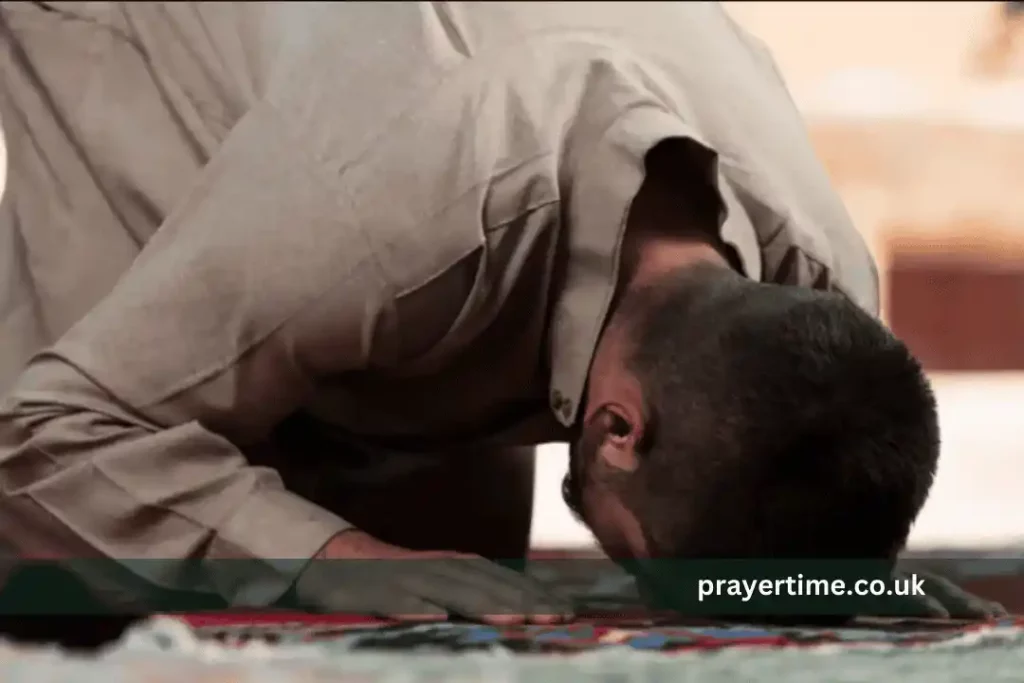
We’ve learned that salah is more than a series of physical movements or recitations. It’s a holistic act of worship that engages the body, mind, and soul. As the Prophet Muhammad (peace be upon him) said,
“The first matter that the slave will be brought to account for on the Day of Judgment is the prayer. If it is sound, then the rest of his deeds will be sound. And if it is bad, then the rest of his deeds will be bad” (Narrated by al-Tabarani).
This hadith underscores the central role of prayer in a Muslim’s life, highlighting its impact on one’s spiritual well-being and ultimate judgment. By learning how to pray namaz correctly and consistently, we’re not just fulfilling a religious obligation but nurturing our relationship with Allah and shaping our character.
Encouragement for consistent practice
Consistency in prayer is key to reaping its full benefits. The Quran emphasizes this, stating, “Indeed, prayer has been decreed upon the believers a decree of specified times” (4:103). This verse reminds us of the importance of praying regularly and at the prescribed times.
For those still learning how to pray, remember that developing a consistent prayer habit takes time and effort. Here are some final tips to encourage your journey:
- Start small: If praying five times a day seems overwhelming, begin with one or two prayers and gradually increase.
- Use reminders: Set alarms or use prayer time apps to help you remember each salah.
- Create a prayer space: Designate a clean, quiet area in your home for prayer. This can help you associate the space with spiritual focus.
- Pray with others: When possible, pray in congregation. This can boost motivation and create a sense of community.
- Reflect on the benefits: Regularly remind yourself of salah’s spiritual, mental, and physical benefits.
Fun Fact
Did you know that the five daily prayers add up to about 30 minutes a day? That’s just 2% of your day dedicated to connecting with Allah!
Remember, the goal of learning how to pray muslim prayer is not perfection but sincere effort and gradual improvement. The Prophet Muhammad (peace be upon him) said,
“The most beloved of deeds to Allah are those that are consistent, even if they are small” (Bukhari and Muslim).
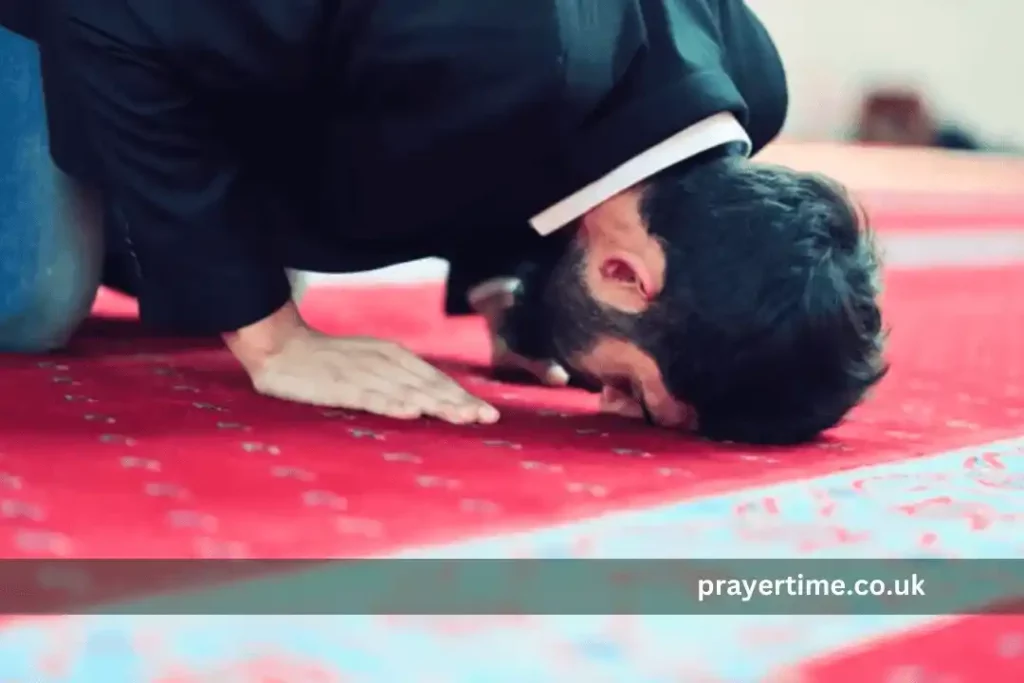
As you continue on your prayer journey, remember that each salah is an opportunity to strengthen your faith, seek guidance, and find peace in your connection with Allah. The challenges you may face in establishing a consistent prayer routine are part of your spiritual growth.
In conclusion, salah is a gift – a daily opportunity to step away from the demands of the world and connect with our Creator. Whether you’re just learning to pray salah or have been praying for years, approach each prayer with renewed intention and gratitude.
May Allah accept our prayers and guide us all to excellence in our worship. Remember, every step you take towards improving your salah enhances your relationship with Allah and enriches your spiritual life.
